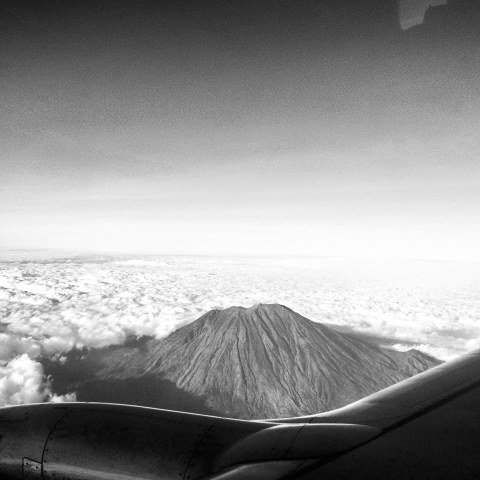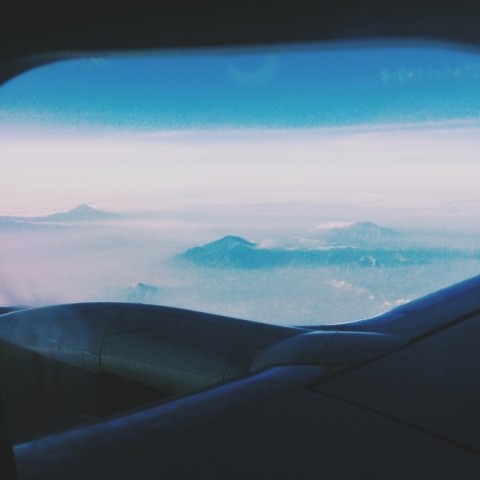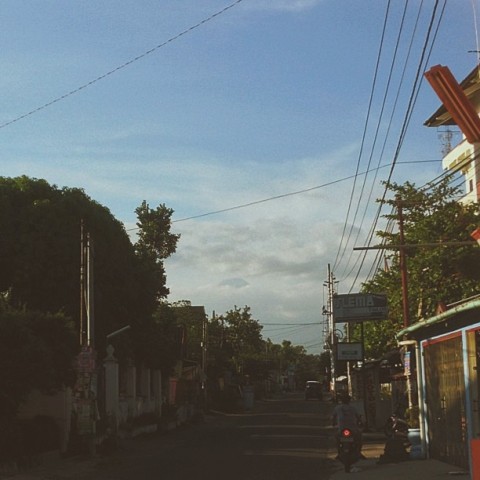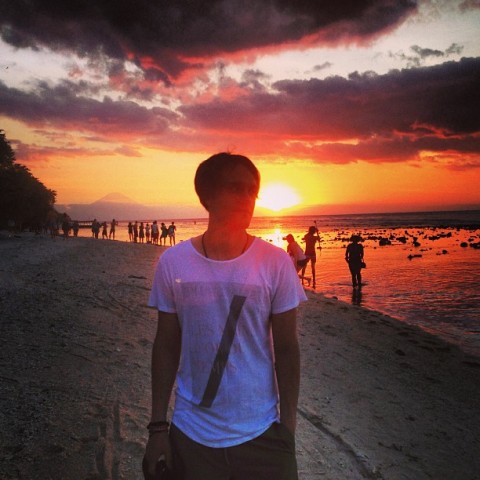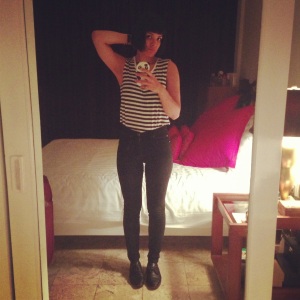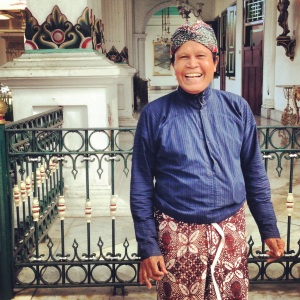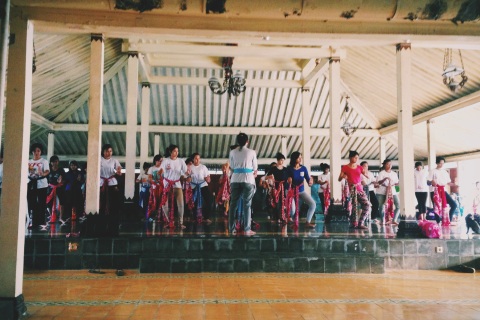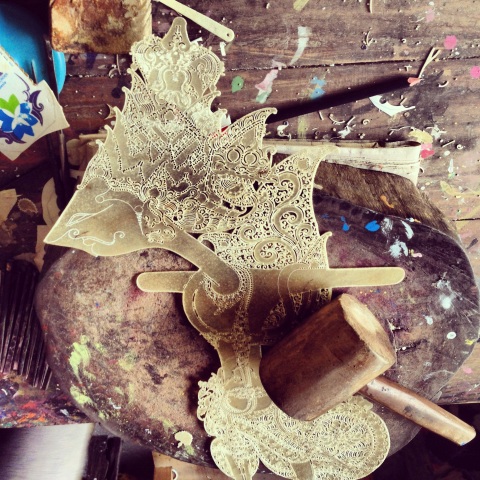Fire and smoke
September 1, 2013 § Leave a comment
There are a lot of volcanoes in Indonesia. Yes, I’m stating the obvious there. But there’s something really exhilarating, confronting and thrilling in actually being able to see them RIGHT THERE on a frequent basis. Hell, I can even see Mount Merapi, one of Indonesia’s most currently active volcanoes, right up the street I live on. It’s an extraordinary reminder of human fragility and natural strength.
One thing I find fascinating is the Javanese spiritual connection with volcanoes. In Yogyakarta especially, a busy city in the shadow of the very active Merapi, this reverence is particularly noticeable. On a clear day, you can make out Merapi looming over the city in sharp relief, and on several occasions I have looked up and gasped. It’s hard to ignore a volcano right there in your face. A few weeks ago, Jogja was looking rather gritty after a dousing of “hujan abu” – ash rain, covering the city in grey debris carried by the rain from the smoking monster. The most recent major eruption was in 2010, which led to thousands of people who lived on the fertile slopes to be displaced, and hundreds of people died.
In relation to the city of Yogyakarta, Merapi lies to the north, and the dangerous South Java Sea to the south. Right in the middle sits the Kraton, the royal court of Yogyakarta where the current king still resides. The people of Yogyakarta believe that the role of the king is to mediate between these two powerful forces, with the palace as a conduit.
Concepts of the elements – smoke, salt, fire, water – and their symbolic importance to the Indonesian people is something I find endlessly fascinating. People who live close to Merapi make offerings to the volcano, in hopes of calm days but continued fertility and good crops. Those who live to the south, closer to the ocean, make similar offerings to the Queen of the South Sea, who they believe controls the raging, wild waves and if not appeased, will happily take victims.
I am really interested in exploring these mythological concepts and their role in the contemporary context of Yogyakarta. There’s just something about volcanoes that sets you on edge, scares the daylights out of you but is so absolutely inspiring. I think there’s something in this idea of being suspended between forces, acting as a conduit or “peace maker” for what those of us in Australian society would consider scientific phenomenon.
On finding art and culture (shock) in Yogyakarta, Indonesia
July 15, 2013 § 3 Comments
Yep, I know – it’s been an obscenely long time between posts, and obviously much has happened in my world. I thought it best now to focus on my current activities, but I’ll update my other pages shortly with some photo and video content from all the other things I’ve been up to over the last year or so!
At the moment, I am living in Yogyakarta (pronounced “Jogja”), Indonesia. As you may know, I grew up in Jakarta and am half Indonesian, so being back is like slipping into some well-worn comfortable leather shoes that you already know form to your feet. I am a recipient of the Indonesian Arts and Culture Scholarship 2013, on offer from the Indonesian government and Ministry of Foreign Affairs. The purpose of the scholarship is to teach participants from all over the world about Indonesian arts, in one of five different arts centres across the country. My particular program is for “Indonesian diaspora” – people of Indonesian heritage living overseas. We are learning arts (Dayaknese dance from Kalimantan and Javanese dance, a bit of batik and gamelan, traditional Indonesian games), and about Indonesian democracy, Islam and other religions in the region, the role of women in society, economy, and so on. Maybe most importantly, while I already speak bahasa Indonesia, I finally am pushing myself to become more advanced.
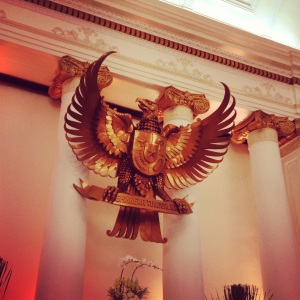
Pancasila – the five main principals upon which the daily life of the Republic of Indonesia is based.
Being in Jogja has been absolutely amazing. It is known as the cultural melting pot of Indonesia, as students from all over the country come for the universities here and bring the cultures of their individual regions with them. As a result, a strong scene of traditional and contemporary art exists here. Basically, the perfect place for me to be in wanting to explore Indonesian art and my own personal practice!
So far, I’ve been here a month, and have really taken the time to just immerse myself in anything and everything that’s going on. There are so many potential points of inquiry I’m not even sure where to begin most of the time! I’ve seen amazing art exhibitions, eaten spicy food, been frustrated by Javanese politeness and “saving face”, burnt myself on hot batik wax, driven 60km on the back of a motorbike to find the most perfect beach in a rural part of Java, met incredible new people and started to make plans for moving back here in the future!
This is mostly just a big catch up on where I am (lest this post becomes tl;dr), and a few photos of what I’ve been seeing. I’ll post later this week on what I’m looking to focus my artistic inquiries on. Sampai jumpa!

